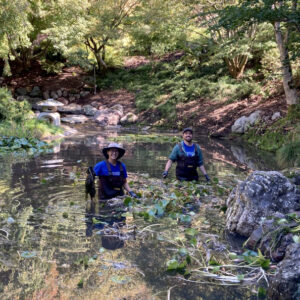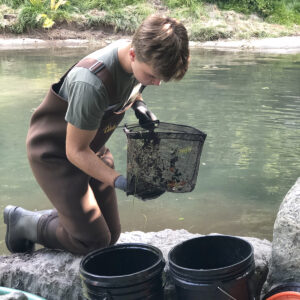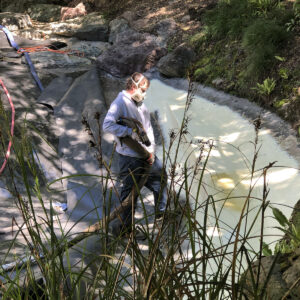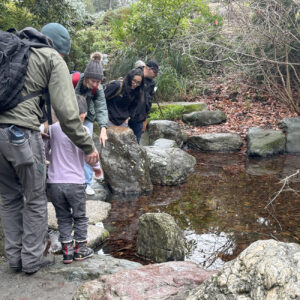The Japanese Pool
For nearly 80 years Garden visitors have been enchanted by the serene pool, waterfalls, lanterns, and stepping stones of the Garden’s Japanese Pool. It provides an elegant home for many aquatic plant specimens and a thriving population of native newts. Sadly, the Pool had been leaking for years and threatened the habitat of the local newts who arrive yearly to spawn. In June of 2023 the Garden launched a fundraising campaign and raised over $150,000 to support this critical work.
In the fall of 2023 the restoration work was completed with the installation of a new pool liner.
This vital restoration work eliminated the leaks in the pool and the surrounding area is open to the public. Garden staff have started replanting the pool with recently acquired Asian water plants. It may look sparse for a while until these plants reach maturity. The captured newts have been returned to the Garden, with some released into Strawberry Creek, and we anticipate their return to the renewed habitat.

In preparation for the work UCBG horticulturists James Fong and Eric Hupperts remove plants from the Pool.

UC Berkeley student worker, Cole Bruhnke, captures newts.

Contented newts in one of the holding tanks at the Garden. Fresh water, perches and food are available for the newts.

Filling the cracks in the cement base of the pool

The base is covered with an impermeable layer of polyurethane—similar to the liner of a truck bed

Restoration work completed, the pool was refilled and visitors enjoy searching for newts
The history of the Japanese Pool
When the Golden Gate International Exposition on Treasure Island closed in 1939, its Japanese exhibit was donated to the Garden on behalf of the Japanese government, with the aid of a donation from the UC Japanese Alumni Association. The exhibit was comprised of stone from Japan, including lanterns and a bridge displayed as a Japanese garden and pool. Kaneji Domoto, a prominent landscape architect in the Bay Area, assisted in designing the Japanese gardens at the Exposition. He also designed the reinterpretation of the display and supervised Japanese workmen as they placed about 150 boulders to create the waterfalls and pool in the Garden in 1941.
The pool was damaged in October 1962 when it rained 38 centimeters (15 in) in just three days. Boulders and lanterns were swept away by a raging Strawberry Creek. Many of the original boulders were recovered along with one original Yukimi-gata (snow-viewing) lantern. The lantern stands by the pool today.

